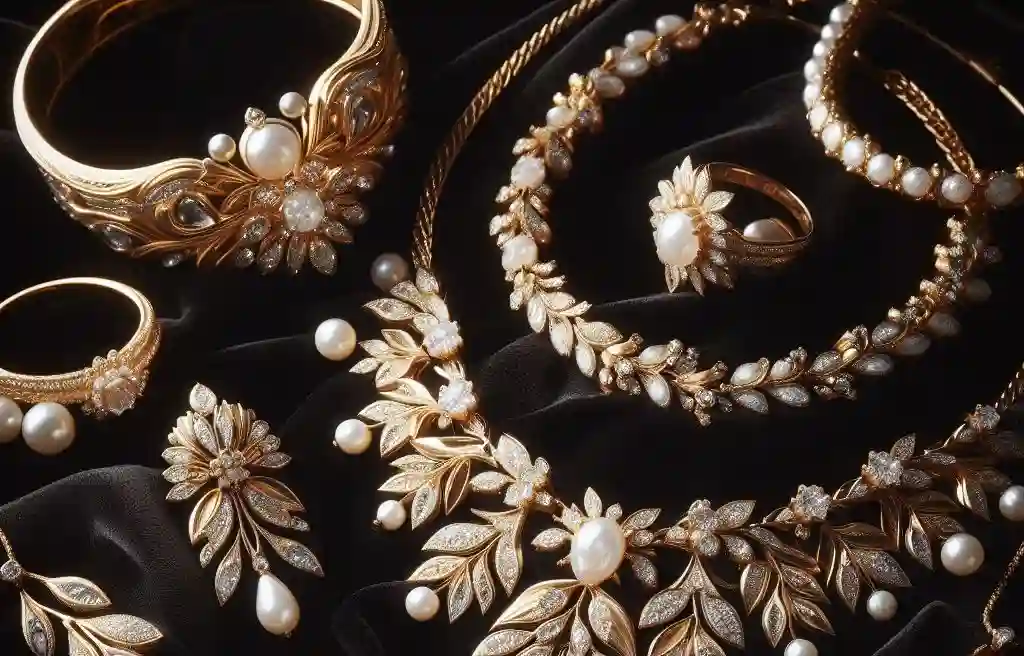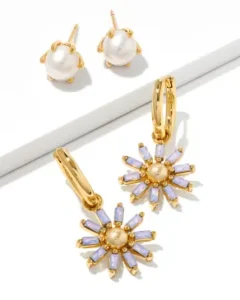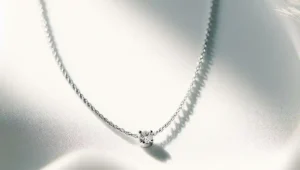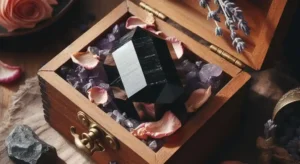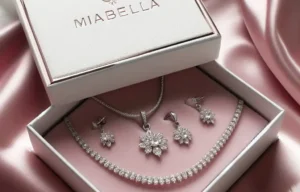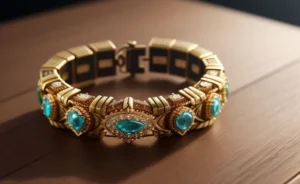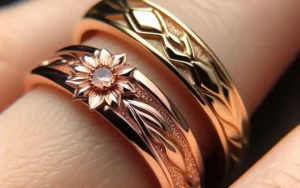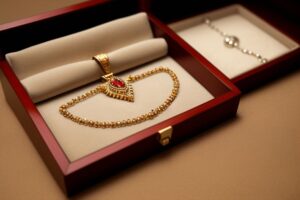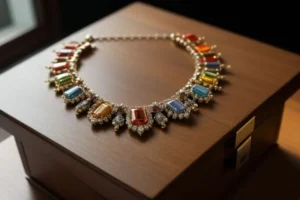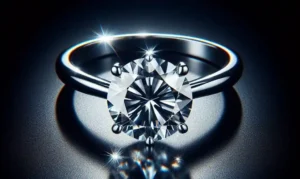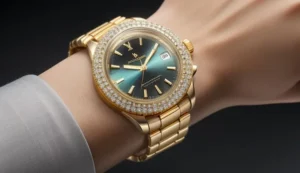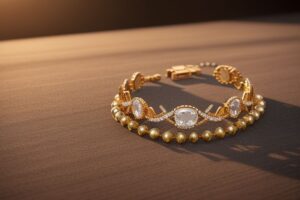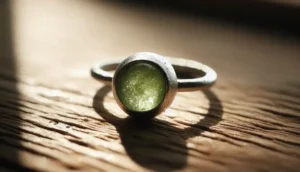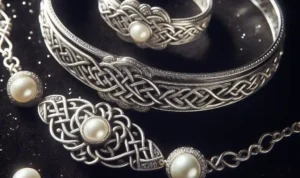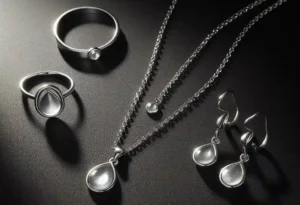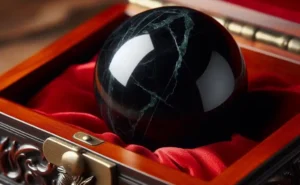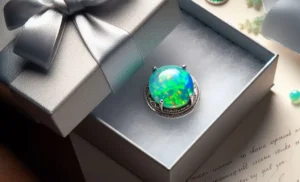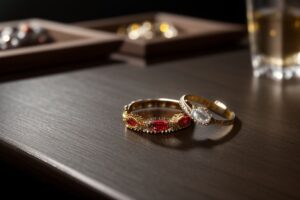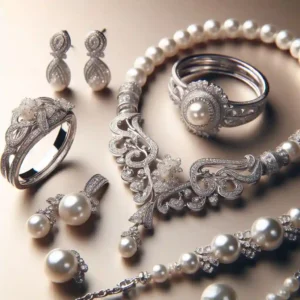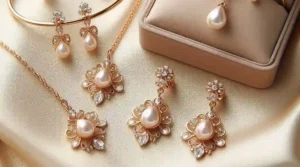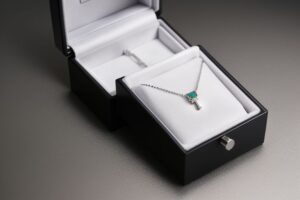How to Remove Gold Plating From Silver? Gold-plated silver jewelry, or vermeil, presents a stunning mix of precious metals. But sometimes, you may prefer the simplicity of silver’s elegance.
If you’re looking to restore the original silver beauty, here are ways to remove gold overlays from your silver jewelry without damaging the underlying silver.
How to Remove Gold Plating From Silver?

To remove gold plating from silver jewelry, a number of methods can be employed:
– Mechanical Removal: Use fine-grit abrasive paper to gently buff away the gold overlay. Ensure light and careful movements to prevent potential scratches on the silver.
– Electrochemical Removal: This complex method involves an electric current that dissolves the gold layer, but it requires adequate knowledge and experience.
– Using a Jeweler’s Cloth: For thin gold plating, a jeweler’s cloth can be used. Apply consistent, gentle pressure and slowly rub away the gold layer.
– Baking Soda and Water: An eco-friendly and gentle method involves creating a paste from equal parts of baking soda and water, then applying it to the gold-plated sections and rinsing off.
– Toothpaste: Use non-gel, non-whitening toothpaste to gently rub away the gold layer. Rinse thoroughly after each application.
– Gold Testing Kit: Use it to ascertain the thickness of the gold plating and guide the choice of the removal method.
Remember, if uncomfortable with any of these methods, professional services are available to safely remove gold overlays from your silver jewelry.
Understand What You’re Working With
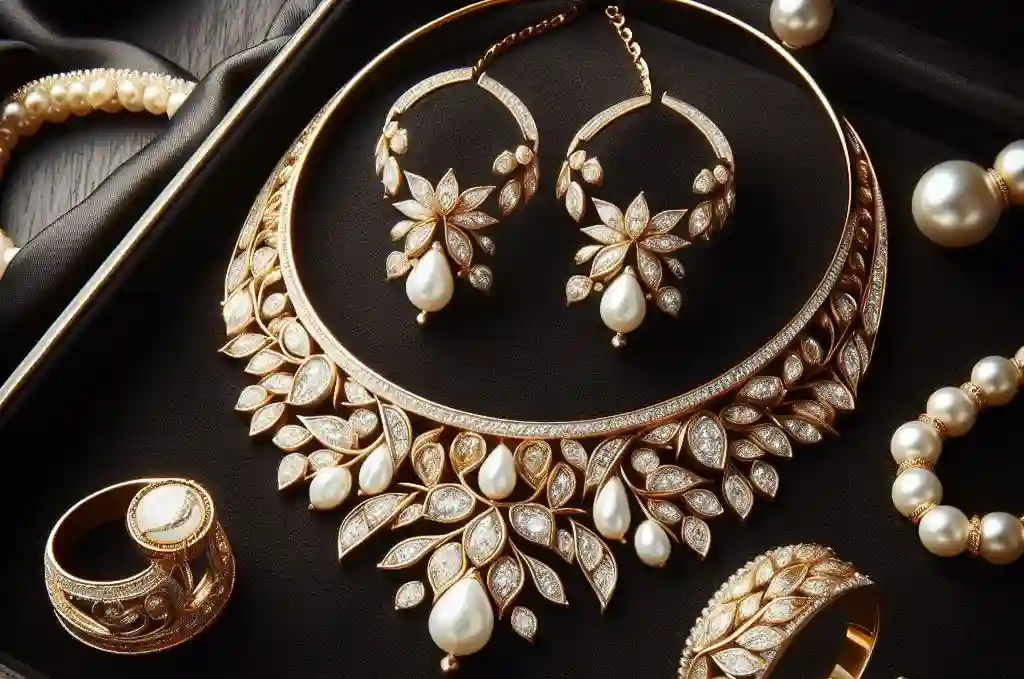
Before initiating the process of gold removal, it’s essential to know the details of your piece of jewelry. Is the underlying material pure silver or merely silver-plated? Is the gold coating robust or just a thin veneer?
The effectiveness and choice of removal methods can greatly vary based on these characteristics. Additionally, you should consider the potential impact on the piece’s emotional or financial worth that might result from stripping the gold layer.
Some pieces might lose their value or sentimental meaning if altered. Understanding your jewelry’s specifics is a key step before moving forward with gold removal.
Gather Necessary Materials
The tools required for removing gold overlay will largely depend on the method you decide to employ. For those who prefer to use common household items, some essentials include a soft-bristled toothbrush, baking soda, toothpaste, a gentle cleaning cloth, and lukewarm water.
If you explore more advanced techniques, be prepared to acquire a jeweller’s cloth designed for cleaning precious metals. You might also need a gold testing kit to help ascertain the thickness of the gold plating. Certain chemicals specifically made for gold removal may also be required.
Remember, no matter the method chosen, it’s important to have all your materials ready and on hand before you start. Being prepared will help ensure a smooth and efficient process of gold removal from your silver jewelry.
Opt for Professional Services
For those who are hesitant about undertaking the task of gold removal on their own, enlisting the help of professionals could be a viable alternative. Jewelers often provide services specifically tailored to safely and effectively remove gold overlays.
These services are not limited to just the gold stripping process. They often also include a comprehensive cleaning and meticulous polishing of the underlying silver, helping to restore its original luster. Choosing a professional service can eliminate the risk of inadvertent damage to your precious jewelry during the removal process.
It also ensures that the task is executed correctly, using the right tools and techniques. Keep in mind, however, that these services may come with a cost, so it’s recommended to inquire about pricing upfront.
It may also be beneficial to research and compare the services of different jewelers to ensure you receive the best quality service for your jewelry.
Use a Jeweler’s Cloth
A jeweler’s cloth is specifically designed for the delicate task of cleaning and polishing precious metals. If the gold plating on your silver jewelry is relatively thin, this method can be quite effective.
The cloth contains abrasive compounds that can slowly wear away the gold overlay when applied with a gentle rubbing motion.
It’s vital to apply consistent yet gentle pressure to prevent any potential damage to the underlying silver. Continue the process, consistently rubbing the gold-plated areas with the jeweler’s cloth until you start to see the gold gradually disappearing, unveiling the underlying silver.
The key to success with this method is patience. Abrupt or harsh actions could lead to unwanted scratches on the silver surface. Thus, take your time and let the jeweler’s cloth do its magic.
Try Baking Soda and Water
For an eco-friendly, at-home method of gold removal, a combination of baking soda and water could be your answer. To employ this method, create a paste by mixing equal parts of baking soda and water.
Smear this paste gently over the gold-plated sections of your jewelry using a soft cloth or a toothbrush. After thoroughly applying the paste, rinse your jewelry under a stream of warm water.
As you rinse, you should notice the gold layer beginning to diminish. Although this method may not offer instantaneous results, it’s an excellent choice for those seeking a gentle, non-abrasive approach to removing gold overlay from silver.
Additionally, baking soda is a common household item, making it a cost-effective solution. Repeat the process as needed until all the gold overlay has been successfully removed. Remember, patience is key with this method.
Toothpaste Can Be Your Ally
Interestingly, an everyday item like toothpaste can be employed to eliminate gold plating from silver jewelry.
However, it’s important to note that not all toothpastes are suitable for this purpose. Select one that is not of the gel or whitening variety for the best results.
Dab a small quantity of toothpaste onto the sections of your jewelry adorned with gold. Using a soft toothbrush, rub the toothpaste gently over these areas.
After the application, rinse the jewelry thoroughly. The gold layer should start to fade with each repetition of this process.
Continue this process, ensuring each time to apply the toothpaste delicately to preserve the integrity of the underlying silver. This approach offers an inexpensive and straightforward way to restore your silver jewelry to its original glory.
Attempt Mechanical Removal
If the gold overlay on your jewelry is significantly thick, you may need to consider a mechanical approach to remove it. This method calls for the use of fine-grit abrasive paper. The paper’s gentle, sanding nature helps to gradually wear away the gold plating without causing harm to the underlying silver.
During the process, lightly and carefully buff the surface of the gold overlay. The goal is to slowly erode the gold layer without compromising the silver underneath.
Be aware, this method necessitates a cautious approach. It is easy to apply too much pressure or buff too long in one spot, leading to potential scratches or damage to the silver beneath.
If at any point you’re unsure or uncomfortable with this process, consider seeking professional help.
Utilize a Gold Testing Kit
An effective method to gauge the thickness of the gold layer is by utilizing a gold testing kit. This kit includes various tools and substances that can help ascertain the depth of the gold overlay. A deeper understanding of the gold’s thickness can guide you in choosing the most appropriate removal technique.
If the gold plating is thin, less aggressive methods like the use of a jeweler’s cloth or baking soda paste might suffice. However, a thicker gold layer could demand more aggressive approaches such as mechanical removal or seeking assistance from professional services.
As you proceed, ensure that the gold testing is done cautiously to avoid any potential harm to the jewelry. A gold testing kit is not only useful for the purpose of gold removal but also serves as an excellent tool for regular maintenance and understanding the true value of your jewelry.
Electrochemical Removal
Electrochemical removal is a more complex method for eliminating gold overlay from silver jewelry. This technique is also known as electrolysis, where an electric current plays a crucial role in the gold removal process.
The gold layer is gradually dissolved by the current, revealing the silver beneath. However, this process requires a keen understanding of electrolysis, including the set-up of the apparatus and the proper handling of the involved electrical components.
Safety is a major concern here, as the process involves electricity and potentially harmful reactions. Therefore, this method should only be employed if you have sufficient knowledge and experience to handle the procedure safely and effectively.
If you’re unsure, it might be advisable to leave this method to professionals or consider alternative techniques.
Keep Safety First
No matter which strategy you opt for to strip gold overlay from your silver jewelry, it’s crucial to maintain safety at all forefronts. When handling your precious pieces, be certain to use mild and careful actions to prevent any potential scratches or harm.
If your chosen method involves using chemical compounds or engaging in the process of electrolysis, it’s critical that you take additional precautions. These could include wearing protective gear such as gloves and goggles, and operating in a space that is well-ventilated.
This will help mitigate the risk of exposure to harmful substances or adverse reactions. If you feel uncomfortable or unsure at any point, it’s better to seek professional help rather than risk damaging your valuable jewelry. Remember, the goal is to reveal the hidden beauty of the silver, not to cause unnecessary damage in the process.
So, whether you’re using household items or engaging in more complex procedures, always prioritize your safety and the safety of your treasured pieces.

